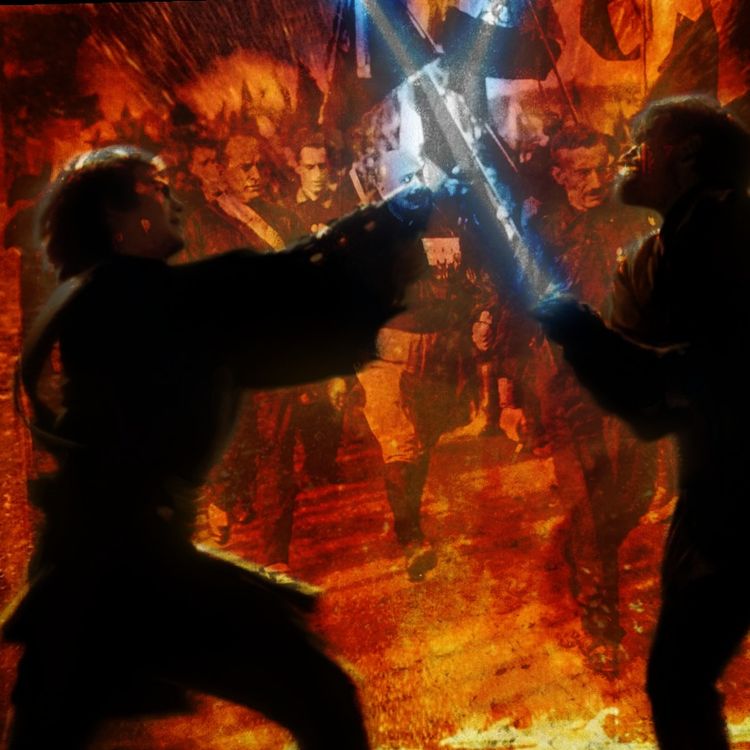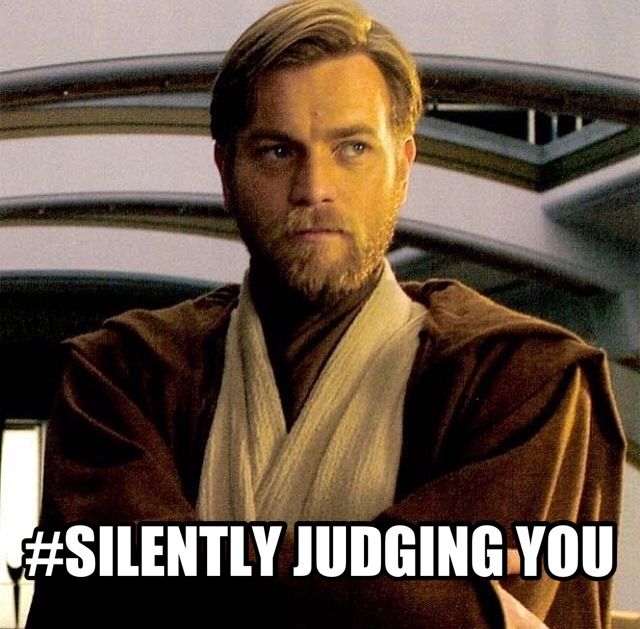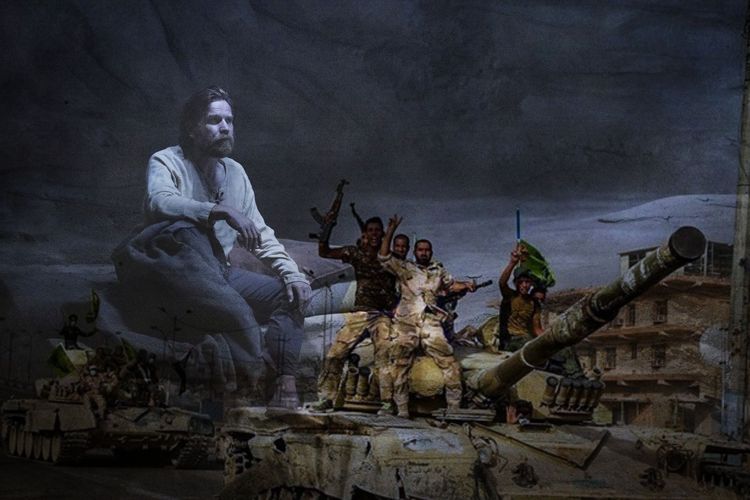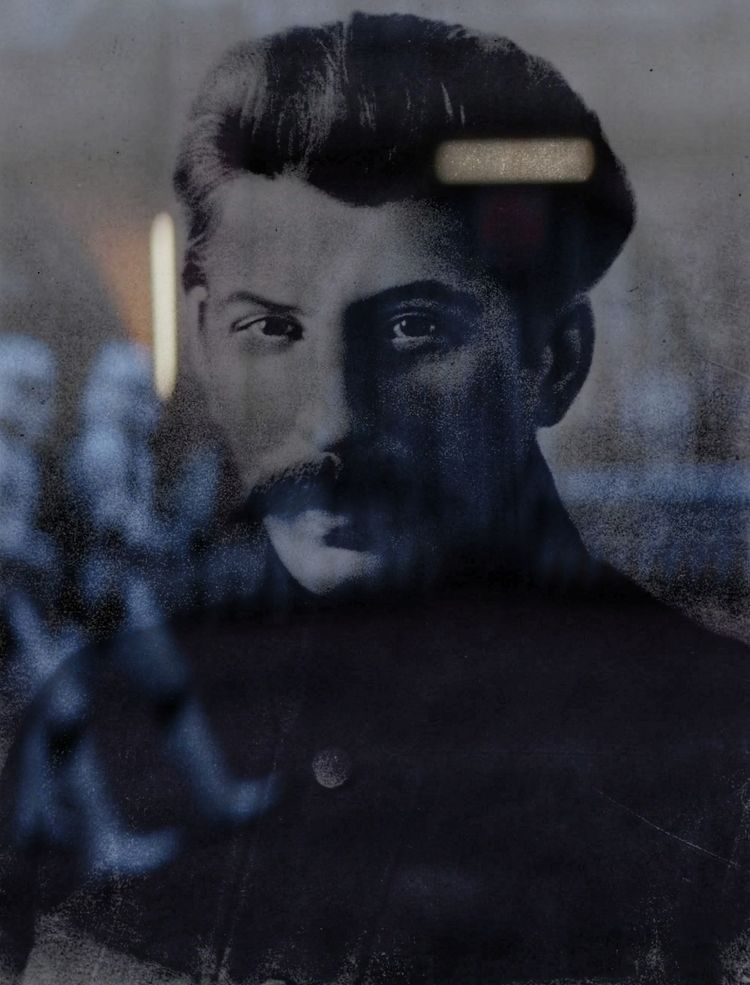Decline and Fall Free: Purge Night

We're back! Decline and Fall, our series of big features on Star Wars, returns with the second of a two-part entry on Revenge of the Sith.
As we noted last time around, Revenge is an extremely dense film. This time, we dig into the disintegrating politics of the terminal Republic, the nature of coups and purges, the boogeyman of American Empire, failure as a natural part of history, and what – precisely – it takes to make someone participate in an atrocity. Paid subscribers can access the whole 13,600 word entry. (It's a meaty one!)
In this mega-size free excerpt, we dive deep into the psychology of Anakin Skywalker, the mechanics of his betrayal, and how the Jedi find out precisely what all that militarization was really for...
The Fall
As it happens, the Jedi Council has finally realized what they might have to do to depose Palpatine. That means contemplating practical steps — which inevitably entails an actual military coup of their own. The Chancellor is, recall, the legally elected head of the government. Should they depose him, they must secure the Senate to oversee a peaceful transition. (A dark line of reasoning, Yoda notes via long-distance call, but he doesn't forbid it, either.)
As soon as they receive word of Grievous’ death, therefore Jedi Council members on Coruscant spring into motion. Master Windu and a trio of others go to the Chancellor's office, intending to force Palpatine to lay down his emergency powers. Skywalker falls in with them on their way out of the Jedi Temple. His face resolute, he shares the news about Palpatine's true identity.
Whatever his private misgivings about this business, Skywalker has decided that arresting Palpatine is a good move here — thus making him a party to the unfolding coup attempt.
More than that, he wants to come along and help. But this shouldn't be a surprise. The brash, violent and somewhat authoritarian Skywalker is precisely the sort of person who might jump aboard a military coup aimed at restoring democracy. Let's take a detour and consider a historical case study to see why.
First, the "military coup to restore democracy" is a particular beast, somewhat distinct from the specifically anti-communist military coups of the Cold War or the astroturfed "populist" power grabs of the 1930s fascist movements. This particular form claims to uphold not just the abstract moral purity of the state or to protect it from communism: it instead fetishizes returning to a specific sort of civilian legitimacy, albeit under the guidance of a watchful military.
One of the more interesting recurring examples of the form is Turkey, which has a long history of military “interventions” — first against the latest Ottoman sultans, then against the Republic of Turkey itself. Beginning in 1960, elements within the Turkish military launched a dizzying array of coup attempts, some through the deployment of tanks, others via strongly-worded memoranda. Twice, Turkish democracy came under direct military rule. In 1983, after a third coup, the military dissolved all previous political parties and called for new elections, transitioning back to a civilian regime. That regime eventually gave rise to the reformist-turned-authoritarian Erdogan, who survived a 2016 coup attempt by a military faction that claimed to be acting out of concern for Turkey’s democracy. (The actual political factors at play were considerably more complicated.)
Can a military act protect Democratic power in a system? Writing in the 1996 edition of the journal Middle Eastern Studies, scholar Ihsan D. Dagi noted that the interventionist streak in the Turkish military was "brought about due to its self-perception as 'guardian of the state' and its distrust of politicians." Naturally, this line of thought is reasonably authoritarian: the military needs to come in, clean up and restore order after fickle, foolish democracy. (Sound familiar?) But that approach has historically been cut with an aspirational commitment to Attaturk’s “modernist” philosophy: a notionally secular, westernized and democratic state.
Dagi lays out the resulting dilemma: a military that continually gets involved to 'clean up' after politicians but that also reasserts its commitment to democracy and transitions back to civilian rule—until the next time. Once the redline of military intervention in civilian government is breached, it becomes that much easier to contemplate. It becomes, in fact, part of the standard political toolkit.
But it's a high-stakes tool. The 2016 coup attempt against Erdogan failed partly due to a lack of support from Turkish opposition groups and the rest of the military. One source estimates that 300 people died in the attempt. Erdogan's government instituted a massive two-year crackdown on protests. It detained around 40,000 people in the immediate aftermath, with subsequent purges of the army, judiciary, and schools.
This is the path the Jedi are steeling themselves to walk down. It's a dangerous path not only for the Republic but for them. Because in military coups, you absolutely must not miss.
The Jedi are going to miss. They're going to miss about as badly as it's possible to do so. Here's how it happens.
First, Windu orders Skywalker to stay behind “for [his] own good.” Perhaps subsequent matters might have unfolded differently if Windu had brought Skywalker along or had given him some specific task to occupy himself. Instead, he leaves Skywalker benched — with nothing to do but chew over Palpatine's promises, working himself up into a frenzy of doubt and fear.
Instead, as it will transpire, Windu and three other Jedi, not nearly enough, stride into Palpatine's office like gunfighters. Swords spring into their hands. Windu gets to the point immediately: they're placing the Chancellor under arrest in the name of the Galactic Senate.
Palpatine’s affable mask slips. The venomous, arrogant voice of his alter ego, Darth Sidious, emerges through McDermids’ slack, suddenly sociopathic face, as he finally brings years of subtext into text.“ I am the Senate.”
The words resound like a long-laid trap snapping closed. Because, of course, he's right. As noted last month, Palpatine has controlled the Senate for three years, with broadly popular acclaim from its members. For all that the senatorial plotters — not invited to this particular adventure, you'll notice — sniff that the constitution is in tatters, we've seen no sign that his amendments are illegal. Instead, as he promised long ago to a different sucker, he made them legal.
This points to another particularly American process: that through lobbying, control of the courts or suborning of regulators, minority interest groups can render the previously unthinkable — or even illegal — entirely legitimate.
For the Galaxy, the upshot is this: Palpatine is the Republic, and the Republic is Palpatine. He’s now the head of a state remade daily in his image, commander of the armed forces, law-giver, administrator, the final word. The only thing he’s broken is custom. The law, in black and white and gunmetal gray, is his. Now, the Jedi have given him the last thing he needed: a pretext.
Palpatine speaks it with a certain calm, satisfied relish. “It’s treason, then." And his lightsaber drops into his hand.
What happens next is not just the narrative navel of Revenge of the Sith: it's the crucial turning point in the Prequel Trilogy and perhaps of the larger epic. It's a sequence that looms over the original films like a half-forgotten curse, a bit of backstory that Lucas couldn't resist wanting to revisit.
First: the scene. Here are Palpatine and the Jedi, their blades finally drawn. The Chancellor's a capable swordsman, cutting down Windu's escort without trouble. (Yet again, the vaunted skill of the fabled Jedi Knights proves sadly lacking — but then, perhaps most of the effective warriors are off on the battlefront.)
But Windu’s better. Before long, the powerful Jedi Master has his enemy out on the edge of a vast broken window, at the edge of the building’s precipice, with a lightsaber in his face. There, Windu coldly informs him that he’s under arrest.
Suddenly, Skywalker runs into the room. He's been unable to stop thinking about Palpatine's promises and his own fears. If the Chancellor dies in the Jedi's coup, what of his offer to save Amidala? And so rather than sit still, Skywalker rushes out to intervene, with no clear idea of what that intervention will look like — save that Palpatine must be alive at the end of it.
With Skywalker’s appearance, the situation within the office spirals fully into chaos. Everyone is yelling their heads off. In what reads as a moment of genuine rage, Palpatine throws black magic at Windu in the form of powerful lightning bolts; the Jedi catches them on his blade and reflects them back into the politician’s face.
It could all go wrong for Palpatine here. There is no way he planned to end up on his back with a lightsaber on his face, literally and figuratively on the brink. All Windu has to do is snap the blade forward, and he will bring Palpatine's great game to an unceremonious end. The Republic will be dead either way. But the Chancellor could very easily join it.
So, with Windu's sword at his throat, Palpatine puts on his most outstanding and most desperate performance. He shouts that the Jedi are traitors, that they've launched the coup he'd warned Skywalker was coming. He appeals to Skywalker’s friendship and loyalty. He sobs that he’s too weak, that Windu will kill him, that this is wrong, and that Skywalker needs him.
"He must stand trial," Skywalker pleads. Out of a belief — regardless of his shaky history in this arena — that the Jedi shouldn't murder defenseless prisoners? Out of a conviction that, on some level, Palpatine is the Republic? Maybe.
Windu’s having none of either. “He has control of the Senate and the Courts,” the Jedi Master snarls. “He’s too dangerous to be left alive.” Palpatine has successfully made himself legally untouchable. But the law is nothing to a man with a sword; right now, Windu has the sword. Yet whether due to Skywalker's pleading, Palpatine's apparent weakness, or his long-held scruples, he hesitates — and is lost.
Because for Skywalker's above, scruples and proceduralist arguments are just that: arguments. Fundamentally, he believes that he needs Palpatine to save his wife, which means that he needs the Chancellor alive, which means that right now, at this moment, he’s sleepwalked his way into being on Palpatine’s side.
And so, as Windu prepares to bring the blade down, Skywalker stops him, his lightsaber semi-accidentally cutting off the Jedi Master's sword hand.
It is not some moment of calculated betrayal. It is, instead, a spasm of blind panic. Sometimes, that’s all it takes to make the worst mistake of your life.
Windu staggers, shocked. Palpatine's smile is a thing of poisonous satisfaction. The mask of the weak and dying old man drops away into full, cackling malice. With a blast of magical lightning, he hurls the shocked Chairman of the Jedi Council out the window to fall into the bottomless depths of Coruscant. "Power!" he screams, his voice a howl of triumph. “UNLIMITED POWER!”
Now, Palpatine stands fully revealed. The discharge of black magic has scarred his face, revealing the truth about him: it has stripped away the glamor of the politician to reveal the rotting, hungry thing beneath. Old, corrupted, yellow-eyed, disgusting: the devil in all but name. He offers the stricken Skywalker an apprenticeship, power, and his wife's salvation.
As a mark of their compact, he also offers him a new name: Darth Vader.
And Skywalker falls to his knees and accepts.
Later in he-who-was-once-Skywalker's life, in packed cinemas across Jimmy Carter's America, our parents' generation watched Darth Vader looming over their screens like a black samurai demigod, barrel-chested and skull masked. His true identity is the pivotal revelation of Lucas' original trilogy, the narrative axle around which the story spun.
But if Vader/Skywalker was the fallen prince of the righteous Republic, that suggested a question that Lucas could never release. If "how Democracies die" is the poli-sci future history part of Star Wars, this is the character drama — what happened to Darth Vader? How did this man, Anakin Skywalker, fall into evil?
Popular memory hasn’t been kind to Lucas’ attempt at answering. Unlike The Empire Strikes Back — which revealed some of Vader’s backstory — Revenge of the Sith, which tells his origin, isn't remembered as a classic. It might have grossed $1 billion worldwide and impressed even that king of the fans, Kevin Smith. ("This is the 'Star Wars' prequel the haters have been bitching for since "Menace" came out," he said, " and if they don't cop to that when they finally see it, they're lying.") But the general response was and remained a gnawing dissatisfaction.
And you know what? The film is perplexing, frustrating and profoundly upsetting text — in part because it sets up the pieces and spins them in motion but does not offer a clear answer to that question. It only makes it more poignant: What makes Skywalker willingly submit himself to Palpatine, a man he now knows to be the worst possible news?
Was Skywalker always a little bit fascist, waiting for a strongman to pledge himself to? That feels too easy. He's always been troubled, scarred by a past life of slavery and a reckless, near-pathological need to submerge himself in death-defying situations. But he is a young adult on the front lines of an epochal, Galaxy-spanning Civil War. His youth, background and circumstances also go a long way toward explaining his arrogance, petulance or general lack of self-control, if not excusing. Had one of Palpatine's disciples not killed Qui-Gon Jinn, had the political situation in the Galactic Republic developed a bit differently, Skywalker might have turned out fine.
Does his relationship with Amidala explain his fall, then? That doesn't feel right, either. True, it was the carrot that Palpatine dangled to lure him away from the Jedi. It is rather toxic and uncomfortable to watch — but this is also not a sign of inevitable evil. In part, their tortured chemistry seems reflective of their being alone, together, amid political collapse: a tumultuous relationship they must keep secret at all costs — or risk being cast out entirely from their privileged positions. (With a baby on the way to turn the pressure up.)
It’s true that Skywalker’s terror of losing Amidala — and of loss and abandonment more generally — certainly plays a large part in what comes next. Indeed, Lucas' stated philosophy throughout the prequels makes this line clear: Attachment leads to fear, fear to anger, anger to hate, and hate to suffering.
And yet Skywalker doesn't even seem focused on that temptation. As Palpatine speaks softly to the stricken Skywalker, the older man rather offhandedly reveals that he doesn’t hold the secret rite for prolonging life — it's something the two of them would have to work out together. Skywalker is seemingly too stunned to notice. If he did, that volcanic rage might have bubbled back up, and Palpatine might have been the next one to fly out the window.
Perhaps the most accurate answer is the least satisfying one: that evil is so often banal, as the woman said. Cackling, self-aware villainy is very rare. Far more common are exhaustion, greed, guilt, rationalization. Despair, moral fatigue, the simple accident of being scared and sleep-deprived in the company of ordinary men at a time when the opportunity for badness comes upon them.
This is where Star Wars was bound to lose the Vader-Must-Be-Badass cadre. For Skywalker, as for all of us, evil is a thing that takes no particular explanation. It looms beneath at all times like a great black gravity well, exerting its subtle, patient tug. Until, finally, he succumbed.
Skywalker's conduct in this scene — he has not yet truly become Vader — is thus interestingly passive. His eyes are hollow and unfocused, suggesting a state of shock so profound as to be permanent. He appears to have finally cracked under the pressure of divided loyalties. He cannot imagine returning to the Jedi: he has just helped kill the head of their Council in halting their attempted coup. It seems the only thing he can imagine is to stagger forward, clinging to Palpatine's empty promises like a life raft. Those promises provide a convenient excuse for him to take what Palpatine can provide if only Skywalker will help him. His formal power. His official legitimacy.
That claim to legitimacy matters. Skywalker, remember, has no particular attachment to the deliberative or consensus-building heart of Republicanism. He defaults toward action — and with that tendency comes a kind of unthinking authoritarianism.
But if Palpatine had been an interloper, an outside force, his temptation probably wouldn't have worked: Skywalker does hold an almost totemic belief in the Republic as a state and a cause. Palpatine has represented that state for as long as Skywalker has been a part of it. As the pontiff of rightful rule, he can offer absolution and certainty to a man who desperately needs both.
By submitting to Palpatine, then, Skywalker can tell himself that he's not a traitor or, worse, a dupe. He can tell himself that he's still doing what he's always done: serving the state and protecting his wife. Anything he does for the state from here will be legitimate, too — no matter how horrific.
And so that’s the tack Palpatine takes with him. In launching their coup against the Senate’s duly appointed Chancellor, Palpatine explains to his new apprentice that the Jedi — all of them, even his erstwhile friend Kenobi — have shown themselves enemies of the Republic and mortal threats to both of them. (On this latter point, given that Skywalker has now chosen his side, Palpatine isn’t exactly wrong!) If they are to be safe, if the Republic is to be safe, they must strike first. Skywalker must take a detachment of clone troopers to the Jedi Temple tonight and wipe out everyone he finds there.
“If they are not all destroyed, it will be civil war without end,” Palpatine intones. “Do what must be done, Lord Vader. Do not hesitate. Show no mercy.”
THE PURGE
And so we come to the Jedi Purge, an event that will ripple throughout the rest of the series in profound ways.
The mechanism is simple and quickly told: Palpatine speaks a coded phrase — "Execute Order 66" — out across the military bands to the Clone detachments accompanying the Jedi on the Outer Rim. That army of clones that Palpatine ordered, whatever their essential humanity, were grown and programmed to a final purpose: this is it. Smoothly and without apparent emotion, they turn their guns on their unsuspecting commanders.
We see it first on Utapau, where Commander Cody — mere minutes after handing Kenobi back his lightsaber and sending him on his way — orders his troops to fire on the Jedi. The heavy guns knock the Jedi Master off his feathered steed, dropping him back into the waters of the cenote. From there, Revenge of the Sith launches into a genuinely affecting and ugly sequence. All across the Galaxy, on every battlefront, Jedi die. They are shot in the back and blasted out of the sky, as they discover too late that the army behind them was never actually under their command.
Visually, the wartime killings of the Jedi mimic the practice of "fragging," the murder of officers by drafted soldiers in Vietnam — an increasingly common occurrence as military discipline broke down and that war dragged toward its stumbling, bloody conclusion, and precisely the sort of thing Lucas would have been familiar with. (Writer George Lepre estimated that around 900 such events occurred between 1969 to 1972. We never get a precise number for how many active Jedi there are — or how many die that day — but that feels like a pretty reasonable number.)
There's an even more apparent political equivalent here: the famous "Night of Long Knives," the 1934 Nazi purge ordered by Hitler to consolidate his power. That series of extra-judicial killings — carried out by the SS — saw the murder of Hitler's former partners, the paramilitary thugs known as the "Brownshirts," under the excuse that they were plotting a potential coup.
Similar programs of top-down, extra-judicial political mass murder have never been carried out within the core of American governance. (The Western frontier, where genocide and atrocity were often tools of policy, is another matter.) But similar events occurred in several places throughout the American hegemony in the aftermath of World War 2. In the Pacific, particularly in Korea and Indonesia, American forces allowed — and sometimes actively participated in — vicious purges of leftist insurgents or labor forces, many of whom had been their allies only a few years before. This policy, which left-leaning historian and journalist Vincent Bevins dubbed “The Jakarta Method,” soon became an open secret, carried out by U.S.-backed governments across Latin America.
Like these campaigns, the Jedi Purge is not restricted to military figures. Skywalker, as ordered, goes to the Temple with a battalion of clone troopers. Together they murder everyone they find there: instructors, apprentices, and children.
This mirrors another violent, common American trope: the school shooting. Revenge of the Sith was written and filmed a few years after the 1999 Columbine Massacre, where two teenagers — one a psychopathic reactionary, the other an angry depressive — sought to emulate the Oklahoma City bombing, in which right-wing terrorists killed 168 people at the Alfred P. Murrah federal building. The shooting occurred barely a month before the debut of The Phantom Menace, leading to some very odd coverage of the Star Wars Gala in Denver.)
The teenage pair fell far short of their target — they killed just 13 of their fellow students — but placed a far greater stamp on the American consciousness. Surviving journals by both of the perpetrators suggest that the massacre was a nihilistic terror attack of the sort that would play out in American public spaces again and again, with increasingly deadening regularity, over the ensuing decades.
Whether Columbine played any role in Lucas' conception of this specific scene is impossible to know. But watching this sequence now, it's impossible not to think of other shootings: the 2012 Sandy Hook shootings, which claimed the lives of 26 people, including 20 six- and seven-year-old children, or the similar 2022 shooting in Uvalde, Texas. It's all there in the visual language of a dead-eyed young man striding into a room full of frightened, hiding children, bearing a weapon of war.
As Skywalker strides in, the children look up, relieved to see a friendly face — relief which fades into terror as his lightsaber ignites, just before the camera cuts mercifully away.
But the invocation of a mass shooting isn't the primary aim of the scene. Mass shootings are often inspired — to the extent that "inspiration" is even the right word— by a bubbling soup of reactionary grievance and disaffected, nihilistic fantasy.
There’s plenty of that in Lucas’ conception of the Dark Side (think of bug-eyed Palpatine screaming about “Unlimited Power!”), but what's going on here is something different, though no less gruesome. In Revenge of the Sith, this mass murder is carried out under the auspices of government policy. It's an inhuman atrocity, and most people carrying it out are visually dehumanized. Throughout this sequence, the clones are again presented as faceless automata, never seen without their helmets, all speaking with that same murderous voice. They are compelled — by programming, like droids — to kill everyone they find. (Making one wonder, of course, what memories they will be left with when they return to themselves.)
As with the last scene where he bows to Palpatine, Skywalker's participation here represents a problem. As we've noted above, there's no reason to label him a psychopath or to suggest that his actions in the Purge speak to some innately evil nature.
In an academic work published last year, Jonathan Leader Maynard, an expert on mass killings at King's College London, argued that a relaxed attitude towards killing is all it takes to lay the foundation for mass atrocity. For Leader Maynard, as The Atlantic noted in an essay on his work, once a wartime society begins to tell stories about how mass killing fits a broader social or strategic purpose, “mass killings become more likely.”
For the killers, that ideology becomes the glue binding together those who give the orders, those who carry them out, and the broader public — ensuring they “all tolerate, or even applaud, atrocities.”
Chillingly, those who carry out such atrocities don't have to be true believers — they don't even have to buy into the ideological backing at all. "Instead, the existence of the ideology and its widespread acceptance in society can provide a sufficient justification for their violence," The Atlantic noted.
Skywalker is just such a non-ideologue. He has long lived in a culture of mass death — he has even murdered children before. The ones he killed in the Tusken camp in a crime of passion were part of the people that tortured Skywalker's mother. That can be read as a particularly vicious act of frontier violence against a group that Tatooine's settlers do not appear to consider people. On top of that, he's now spent three years fighting a war for the very existence of the Republic — a state that has now been bound up with Palpatine and in service of which he has undoubtedly been responsible for some level of what is euphemistically called "collateral damage."
In essence, Skywalker — the Top Gun maverick and merry warrior — has always been extremely willing to use violence against those dubbed acceptable targets. Now that the Jedi have been moved into that category, he kills them just as quickly as he killed Tuskens, Geonosians, droids, or any other enemy put in front of him.
And if the war he's fighting is now being carried out in his former school, waged via a weapon he was taught to use there — well, that's what wars and warriors ultimately do. They come home.
And so the Temple burns. Flames and smoke lick the Coruscant sky. A concerned Bail Organa, senator of Alderaan, Jedi ally, and chief architect of a competing senatorial plot against Palpatine, races to the scene in time to see clone soldiers killing children — and barely escapes with his life. Meanwhile, a pregnant Amidala watches the distant carnage in her apartment, wondering what it means.
We might ask that as well. The Jedi Order was a deeply flawed and ineffective institution that signally failed the Republic it claimed to serve.
But even leaving aside Palpatine's ideological hatred of them, the order was nonetheless a potential check — and occasionally an actual one — on his power. This, after all, is why he co-opts, subverts, and ultimately eliminates all of them he can find, just as he had the corporate interests of the Separatists.
Was their downfall inevitable? Probably. Perhaps Palpatine would have strung them along longer if they'd proved more tractable. Maybe not: the plan to finish them off in a single go works best if they're still separated and embedded with Clone forces, an organizational scheme in which Palpatine had a hand. Either way, Order 66 was always Palpatine's ace to play — and one he must have planned long before the war's first shots were fired, when he contracted the clone-builders of Kamino to build him a bespoke army with a secret kill-switch in their heads. He got extremely good value for his money.
The Jedi Purge serves a particular set of narrative purposes as well.
First, a good chunk of Star Wars' main characters have been — and will be — Jedi, or allies of the Jedi. The destruction of the Order is thus a foundational event for everything that follows. Wizards are often (though not always!) singular characters in classic fantasy. The Purge neatly moves the Order from a political entity to a mythic one: a symbol of a lost and glorious past that makes its surviving members more special.
But the Purge also serves as a narrative shorthand for Palpatine's ruthlessness and the nature of what his new imperial rule will entail. The Republic, whatever its many flaws of neglect and weakness, has not been shown to do things like this: if an empire, it clings to the trappings of liberalism. The Jedi Purge is thus an expression of state change, in both the political sense of a shifting regime and the physical one of water turned to ice. It may even be the pretext for the Empire's violent creation.
The Jedi helped gestate the world that was coming. But they had to die for it to be born.
To read the rest of the feature and follow subsequent entries in Decline and Fall, you can grab a paid subscription right here. (It'll also get you access to other paywalled articles and our growing Discord community.) Join us!






Member discussion